The kitchen is often considered the heart of the home—a space for cooking, gathering, and making memories. As such, it’s no surprise that kitchen renovations are one of the most popular home improvement projects for homeowners looking to boost both functionality and property value. A well-designed kitchen can enhance daily living and significantly increase resale value, making it a smart investment for the long term.
At NYC Kitchen and Bath, we’ve seen firsthand how the right renovation can transform not only a space but an entire home. However, the cost of a kitchen renovation can vary widely depending on a number of factors. Everything from the size of the space and the quality of materials to the complexity of the design and regional labor rates can influence the total price tag. A basic cosmetic update might cost a few thousand dollars, while a full gut renovation with high-end finishes can easily exceed $60,000.
Average Cost of a Kitchen Renovation in 2025
As of 2025, the average cost of a kitchen renovation in the U.S. ranges from $15,000 to $60,000, though prices can go much higher based on design choices and location. Factors like kitchen size, material quality, appliance upgrades, and labor costs all play a role in the final total. Renovations are generally categorized into three tiers:
- Budget Renovations ($10,000–$20,000): Focus on cosmetic changes like painting, refacing cabinets, installing new fixtures, and using affordable materials such as laminate countertops.
- Mid-Range Renovations ($20,000–$45,000): Include new cabinetry, mid-tier countertops like quartz, updated appliances, and improved lighting.
- High-End Renovations ($45,000–$100,000+): Involve custom cabinetry, luxury appliances, natural stone surfaces, smart technology, and possible structural modifications.
Understanding which tier your project falls under can help you plan more accurately and prioritize your spending based on what matters most for your lifestyle and home.
Tell Us About Your Kitchen Renovation Project
Our kitchen renovation experts are ready to help you bring your dream kitchen to life with a full range of design and remodeling services. No matter the size or scope of your project, NYC Kitchen and Bath has been transforming kitchens across New York City and the greater Tri-State Area for nearly a decade—earning a reputation for quality, creativity, and customer satisfaction.
No kitchen renovation is too big, too small, or too complex. Just tell us what you envision for your remodeled kitchen, and we’ll deliver results that exceed your expectations.
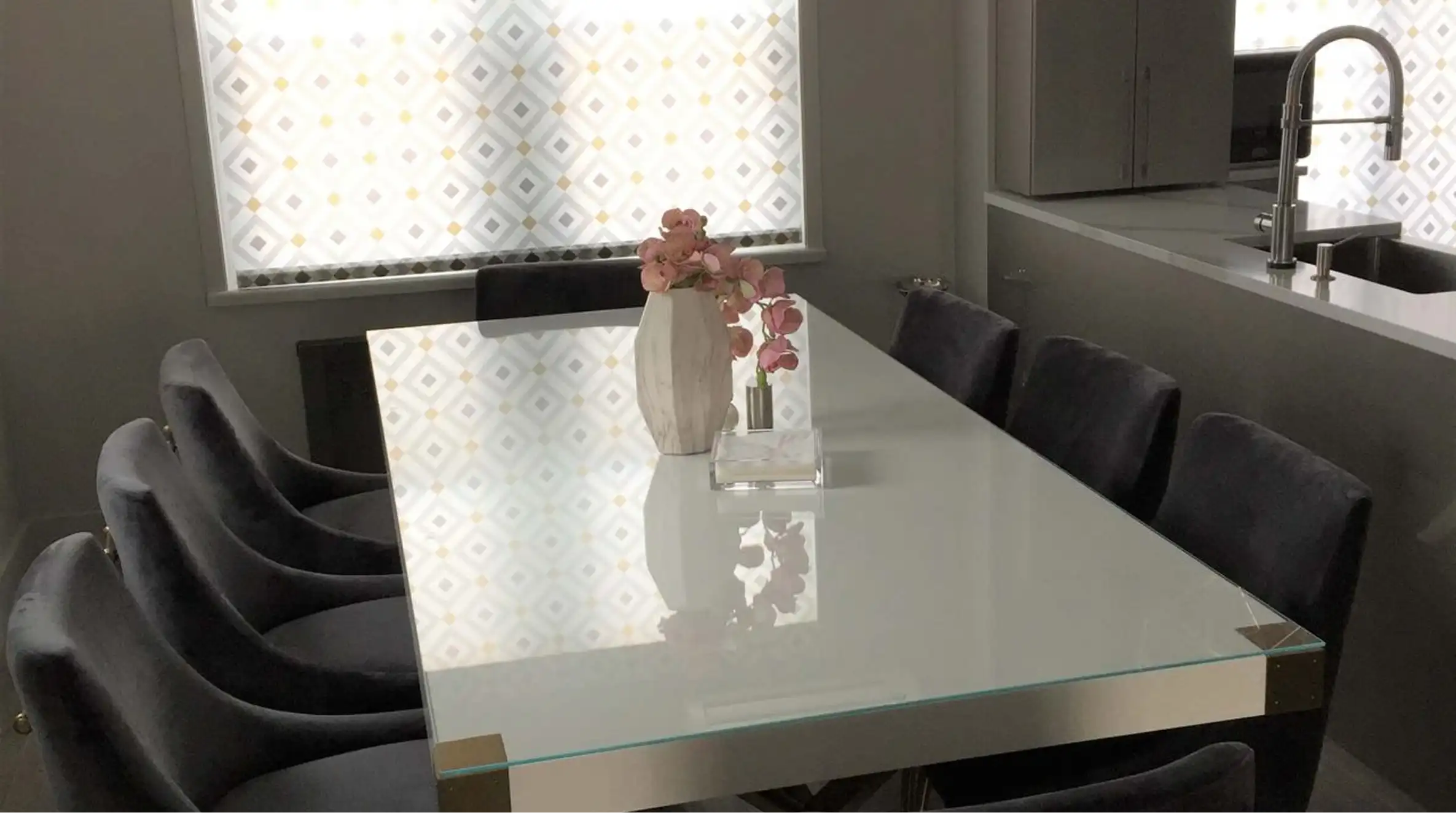
Major Factors That Affect Kitchen Renovation Costs
Understanding what drives the cost of a kitchen renovation is essential to planning a realistic budget. While average figures can provide a general idea, the specific details of your project will ultimately determine the final price. Here are the key factors that influence kitchen renovation costs in 2025:
1. Scope of Renovation
The extent of your renovation is one of the biggest cost determinants. A cosmetic update costs significantly less than a full-scale remodel.
- Cosmetic Renovation: Involves surface-level changes like painting walls, replacing cabinet hardware, updating light fixtures, or installing a new backsplash. These typically cost less and are quicker to complete.
- Full Gut Remodel: Includes removing and replacing everything—cabinets, flooring, appliances, and possibly altering the kitchen layout. This requires more time, materials, and labor, making it far more expensive.
2. Size of the Kitchen
The size of your kitchen directly impacts material quantities, labor time, and overall cost.
- Small Kitchens (under 70 sq ft): Lower material costs and fewer appliances result in a more affordable renovation.
- Medium Kitchens (70–150 sq ft): Common in many homes, these require a moderate investment.
- Large Kitchens (150+ sq ft): More square footage means more cabinetry, counter space, flooring, and lighting, all of which increase costs.
3. Materials and Finishes
Your choice of materials can dramatically change your renovation budget. High-end finishes add luxury but also cost considerably more.
- Cabinetry:
Stock cabinets are pre-made and generally the most cost-effective option. Semi-custom cabinets offer more design flexibility and features at a higher price point. Custom cabinets are fully tailored to fit your space, style, and functional needs, making them the most expensive option. However, each cabinet is priced individually based on factors like size, finish requirements, accessories, and modifications—so pricing by linear foot does not apply. - Countertops:
Countertop pricing depends on the material, fabrication requirements, and installation. While butcher block may appear budget-friendly at first glance, it can become costly in this area once you factor in templating, fabrication, cutouts, and installation.
More commonly chosen materials include:- Natural Stone (e.g., granite, marble): Durable and stylish, natural stone is a popular mid- to high-range option, depending on the specific type and finish.
- Solid Surfaces (e.g., quartz, Corian): These offer a balance of durability, low maintenance, and aesthetic appeal, typically falling in the mid-range price category.
- Laminate: Once a budget go-to, laminate is now used less frequently in modern kitchen remodels.
Concrete and premium marble remain high-end options, often selected for their unique appearance and custom finishes.
- Flooring:
Vinyl and laminate are among the most cost-effective flooring options and are relatively easy to install. Tile and engineered wood fall into the mid-range category, offering a good balance of durability and style. Hardwood and natural stone are considered high-end choices, known for their longevity and timeless appeal.
4. Appliances
Appliances make up a significant portion of the budget, especially if you’re upgrading to energy-efficient or high-end models.
- Reusing existing appliances can help save money.
- New, standard appliances are moderately priced and widely available.
- Premium appliances—such as built-in refrigerators or commercial-grade ranges—can add thousands to the total cost.
5. Labor Costs
Labor typically accounts for 20% to 35% of your renovation budget, and prices vary by region and complexity.
- Location-based pricing means renovations in urban or high-cost-of-living areas (like San Francisco or New York) will cost more.
- Contractor fees and design consultation charges also vary depending on experience and demand.
- Permits and inspections, often required for structural, plumbing, or electrical changes from your licensed contractor, add to the total cost.
6. Plumbing and Electrical Work
If your renovation includes relocating sinks, dishwashers, or lighting fixtures, expect higher costs due to the complexity of plumbing and wiring.
- Simple updates like replacing faucets or fixtures are more affordable.
- Major upgrades, such as rewiring circuits, adding outlets, or updating old pipes, require licensed professionals and can be costly.
- Homes with outdated systems may also require code-compliance upgrades, further increasing the budget.
Carefully evaluating these factors and how they apply to your specific kitchen will help you create a more accurate renovation plan. Prioritizing where to spend and where to save can keep your project on track financially without compromising quality or style.
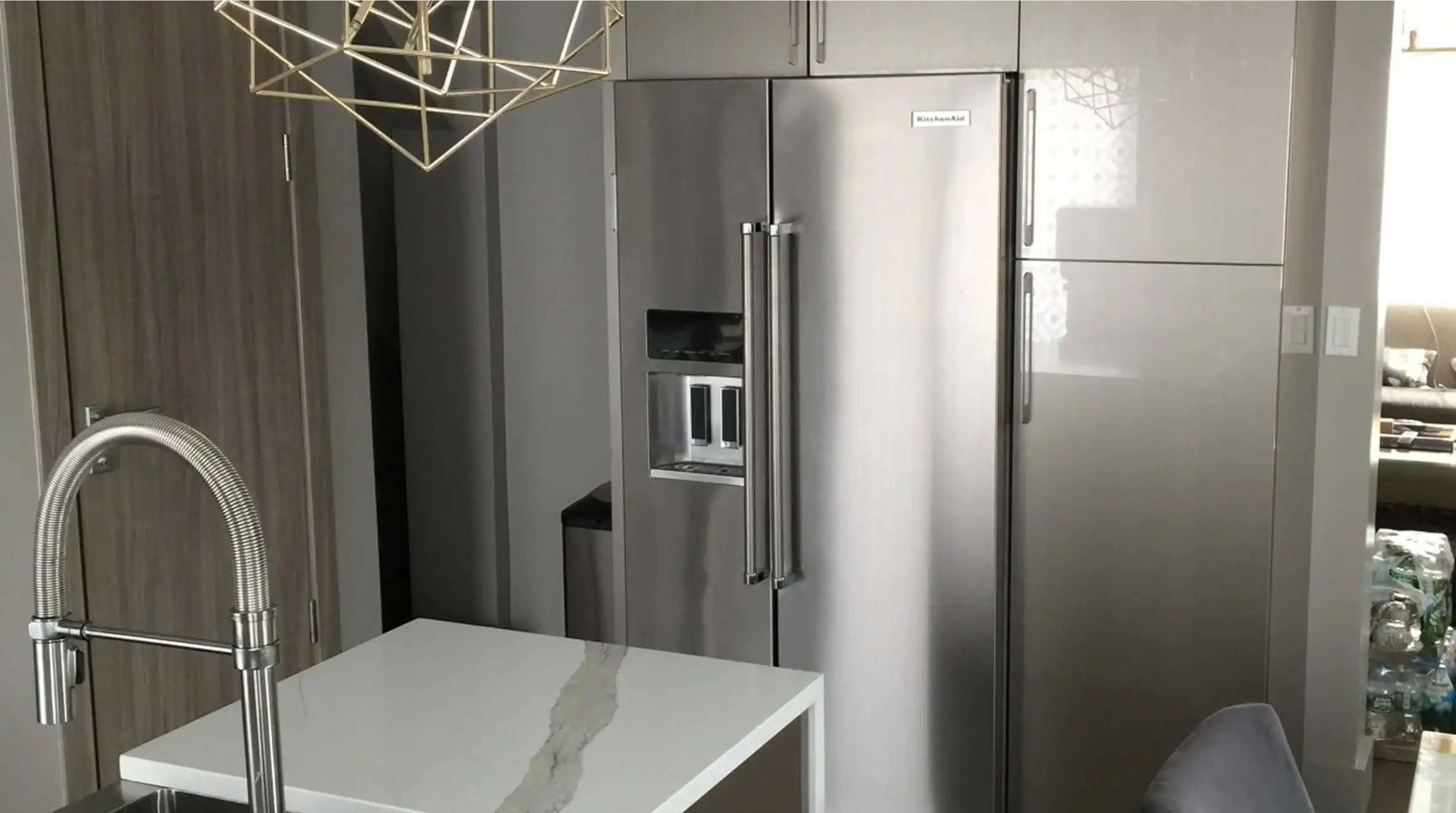
Cost Breakdown by Category
When budgeting for a kitchen renovation, it’s helpful to understand how your money will be allocated across different components. Below is a breakdown of the most common kitchen renovation categories and their typical costs as of 2025. While actual pricing may vary depending on your region and preferences, this overview can guide your planning process.
1. Cabinetry and Hardware
Cabinetry often represents the largest share of a kitchen renovation budget—typically 30% to 40% of the total cost. However, it’s important to note that cabinets are not priced by linear foot. Each cabinet has a unique price based on several factors, including:
- Cabinet Size: Larger cabinets generally cost more.
- Finish Options: Pricing varies depending on whether one side, both sides, or no sides require finishing.
- Customizations: Accessories, internal features (like pull-outs or organizers), and any modifications to standard sizes will affect the final cost.
Because of these variables, pricing is determined on a per-cabinet basis rather than using a standard linear foot measurement.
2. Countertops
Countertops are both a visual focal point and a functional surface, so the material you choose will significantly impact your budget.
- Laminate: $20–$50 per square foot
- Butcher Block: $40–$100 per square foot
- Granite: $50–$100 per square foot
- Quartz: $60–$120 per square foot
- Marble: $75–$200+ per square foot
Quartz continues to be a popular choice for its balance of durability, style, and maintenance.
3. Flooring
Kitchen flooring needs to withstand moisture, traffic, and spills. Costs vary by material and installation method.
- Vinyl/Luxury Vinyl Plank (LVP): $2–$7 per sq. ft.
- Ceramic or Porcelain Tile: $5–$15 per sq. ft.
- Engineered Wood: $6–$12 per sq. ft.
- Hardwood: $8–$15+ per sq. ft.
Waterproof options like tile or LVP are ideal for kitchens prone to heavy use and moisture.
4. Lighting Fixtures
Lighting can dramatically affect the look and functionality of your kitchen. A well-lit kitchen typically includes a combination of three types:
- Task Lighting: Under-cabinet lights or pendant lights over islands – $50–$200 each
- Ambient Lighting: Recessed ceiling lights or central fixtures – $100–$300
- Decorative Lighting: Chandeliers or statement pieces – $200–$1,000+
A layered lighting plan helps balance practicality and design.
5. Appliances
Appliances vary widely in price based on brand, technology, and energy efficiency. A typical appliance package can cost between $3,000 and $15,000+.
- Refrigerators: $800–$3,500+
- Ranges/Ovens: $700–$6,000+
- Dishwashers: $400–$1,500
- Microwaves: $100–$800
- Range Hoods: $300–$2,000+
Smart appliances and professional-grade equipment will increase overall costs.
6. Backsplash and Wall Finishes
Backsplashes are an easy way to add personality to your kitchen while protecting the walls from splashes and stains.
- Ceramic Tile: $5–$15 per sq. ft.
- Glass or Mosaic Tile: $10–$30+ per sq. ft.
- Stone or Marble: $15–$50+ per sq. ft.
- Installation: $10–$20 per sq. ft.
Consider extending the backsplash to the ceiling for a modern, seamless look.
7. Paint and Finishing Touches
Paint is one of the most budget-friendly ways to freshen up your kitchen. High-quality, kitchen-grade paint helps resist stains and humidity.
- Paint (including labor): $300–$1,500 depending on kitchen size and wall condition
- Trim and Finishing: Additional $100–$500+ for crown molding, baseboards, or accent features
Even small decorative details like open shelving or accent walls can elevate your space without a large investment.
8. Labor and Installation Costs
Labor typically accounts for 20% to 35% of the total renovation budget. This includes contractors, electricians, plumbers, carpenters, and tile installers.
- General Contractor Fees: 10%–25% of the project cost
- Skilled Labor (e.g., plumbing, electrical): $50–$150 per hour
- Permits and Inspections: $500–$2,000 depending on location and scope
Proper installation ensures safety and longevity, so hiring qualified professionals is essential even if it costs more upfront.
By understanding the cost breakdown across each major category, you can prioritize what matters most to you and plan a renovation that aligns with your vision and budget.
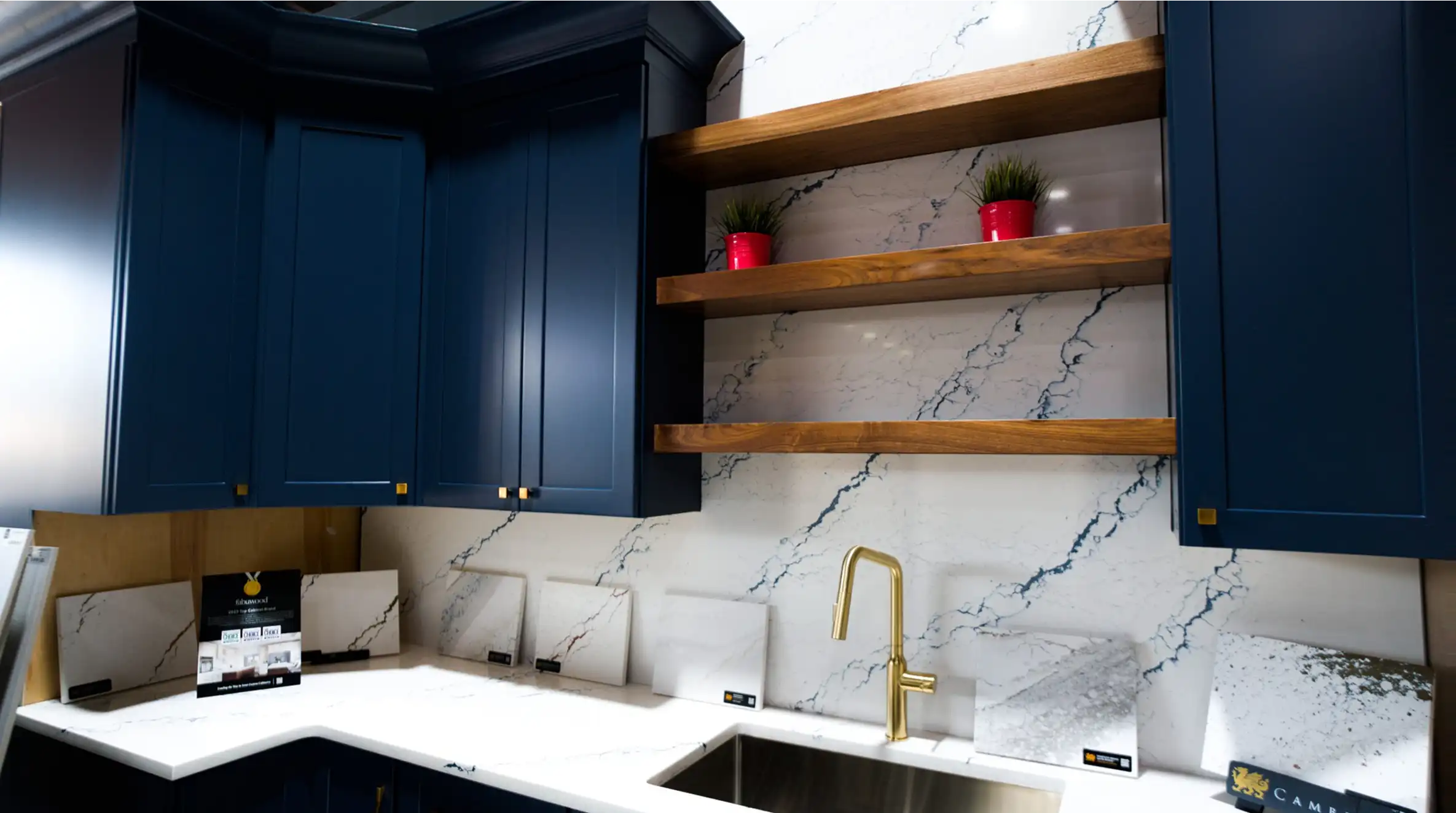
Hidden or Unexpected Costs to Plan For
Even with careful budgeting, kitchen renovations often come with hidden or unexpected costs that can catch homeowners off guard. Failing to plan for these extras can lead to budget overruns and project delays. Here are some of the most common hidden expenses to consider as you prepare for your kitchen remodel.
1. Permits and Inspections
Many kitchen renovations—especially those involving structural, electrical, or plumbing changes from your licensed contractors—require city permits and inspections. The cost and requirements vary based on location and the scope of work.
- Permit fees: $100–$2,000 depending on the jurisdiction and project complexity
- Inspections: May be required at multiple stages (e.g., framing, electrical, final sign-off)
Working without proper permits can lead to fines, failed inspections, or complications if you sell your home in the future.
2. Structural Issues or Code Upgrades
Once demolition begins, you may uncover hidden problems behind the walls or beneath the floor—especially in older homes.
- Water damage or mold
- Outdated or unsafe wiring
- Unsupported walls or damaged framing
- Old plumbing that needs replacing
- Insulation or ventilation issues
Additionally, you may be required to bring parts of your kitchen up to current building codes, especially electrical outlets, plumbing, or ventilation systems. These necessary upgrades can addressed by your licensed contractor.
3. Delivery Fees, Disposal, and Clean-Up
The logistics of bringing in new materials and removing old ones are often overlooked in budgeting.
- Appliance and material delivery fees: $50–$500 depending on size and vendor
- Debris removal and dumpster rental: $300–$800
- Post-construction cleaning services: $150–$500
If you’re not handling these tasks yourself, factor in these service costs. They ensure a safe, clean, and clutter-free renovation site and a finished kitchen.
4. Temporary Kitchen Setup During the Renovation
If your kitchen will be out of commission for several weeks, you’ll need a plan for meals and daily routines. Setting up a temporary kitchen in another room or relying on takeout can add to your expenses.
- Portable cooking appliances (e.g., hot plate, microwave, toaster oven)
- Mini fridge or cooler for food storage
- Increased spending on dining out or meal delivery
- Laundry room or bathroom sinks used for dishwashing
Planning for your daily needs will help minimize the inconvenience and keep surprise costs in check during the renovation period.
These hidden expenses can add 10%–20% to your total renovation cost, so it’s wise to build a buffer into your budget from the start. By anticipating these potential setbacks, you’ll be better prepared to handle them without derailing your project.
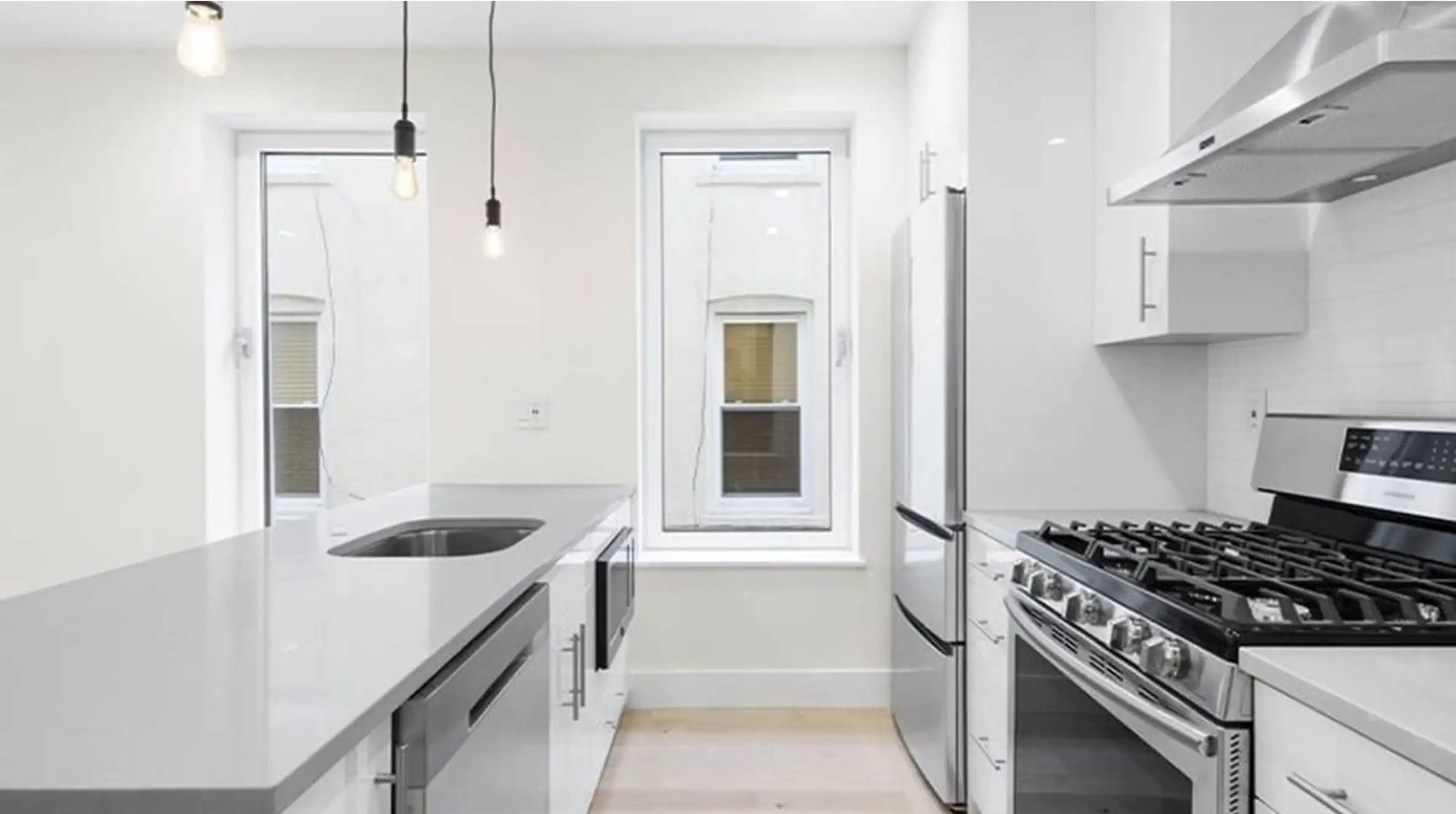
How to Save Money on Your Kitchen Renovation
A kitchen renovation doesn’t have to break the bank. With thoughtful planning and smart choices, you can transform your space while keeping costs under control. Whether you’re working with a tight budget or just looking to stretch your dollars further, here are practical ways to save money on your kitchen remodel without compromising on style or quality.
1. Reface Instead of Replace Cabinets
Cabinets are one of the most expensive parts of a kitchen remodel. If your existing cabinets are in good structural condition, consider refacing them instead of replacing them.
- Refacing involves replacing the cabinet doors and drawer fronts while keeping the existing cabinet boxes.
- It costs significantly less than installing new cabinets and still delivers a fresh, updated look.
- You can also repaint or refinish cabinets to give them a new lease on life.
Working without proper permits can lead to fines, failed inspections, or complications if you sell your home in the future.
2. Shop Sales or Use Recycled Materials
Timing your purchases and exploring alternative material sources can result in major savings.
- Look for appliance and material sales, especially during holiday weekends or end-of-season clearances.
- Check surplus or salvage stores for discounted tiles, lighting fixtures, or reclaimed wood.
- Consider scratch-and-dent appliances, which often have minor cosmetic flaws but function perfectly and are deeply discounted.
3. Do Some Tasks Yourself
Labor is a major cost in any renovation. Tackling some of the simpler tasks yourself can reduce your total expenses.
- Demolition: Removing cabinets, flooring, or old fixtures can be done by most homeowners with minimal tools.
- Painting: Prepping and painting walls or cabinets is time-consuming but straightforward.
- Installing hardware or backsplashes: With the right tools and tutorials, DIY installations can save hundreds.
Only take on tasks that match your skill level—poor execution can cost more to fix later.
4. Prioritize Must-Haves vs. Nice-to-Haves
Not every feature is essential. Identify what you truly need versus what would be nice to have and allocate your budget accordingly.
- Must-haves might include new plumbing if the old system leaks, or updated lighting for better visibility.
- Nice-to-haves could be a pot filler faucet, a wine fridge, or open shelving for style.
- Focus your spending on items that will enhance daily function and long-term value.
Making a list of priorities can help you avoid impulse upgrades that push you over budget.
5. Hire the Right Contractor and Get Multiple Quotes
Choosing the right contractor is crucial—not just for quality work but also for staying within budget.
- Get at least three quotes from licensed and insured contractors to compare prices and scopes of work.
- Ask for references and review portfolios to ensure they’re experienced with kitchen renovations.
- Be wary of unusually low bids, which can lead to poor workmanship or hidden fees later.
- A trustworthy contractor can also suggest cost-saving alternatives and help avoid expensive mistakes.
By implementing these strategies, you can create a beautiful, functional kitchen without overspending. Smart decision-making and a little creativity go a long way in making your renovation both affordable and rewarding.
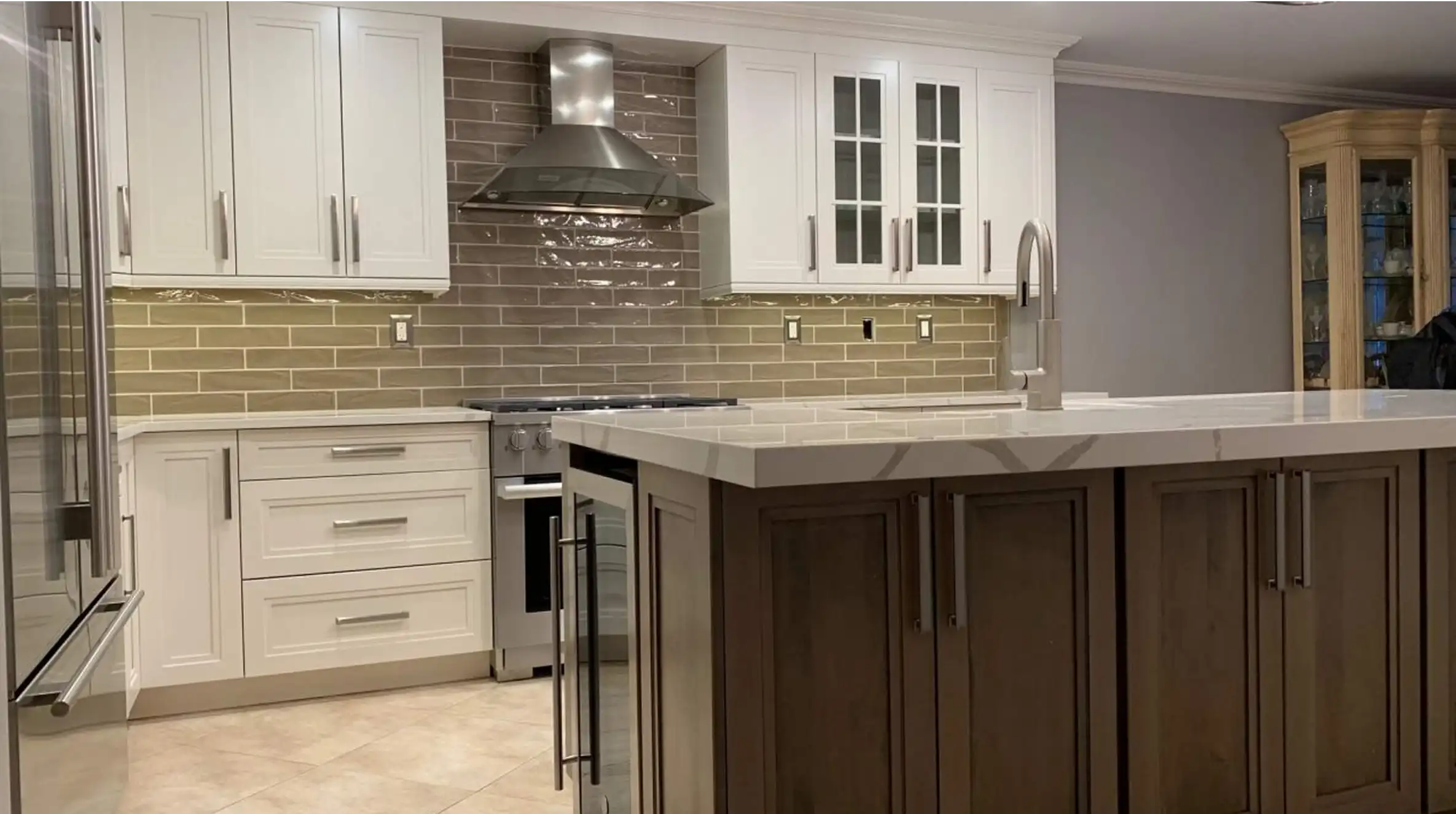
Financing Options and Budgeting Tips
A kitchen renovation is a major investment, and many homeowners need help covering the cost upfront. Fortunately, there are several financing options available, along with smart budgeting strategies that can help you manage your expenses and avoid financial stress. Here’s how to plan your kitchen remodel without derailing your finances.
1. Financing Options for Kitchen Renovations
If you’re not paying out of pocket, you’ll need to explore ways to finance your project. Each option comes with its pros and cons, so choose what fits your financial situation and goals.
- Personal Loans:
- Unsecured loans with fixed interest rates and monthly payments.
- Quick to obtain, but may have higher interest rates than secured loans.
- Home Equity Loans or HELOCs (Home Equity Line of Credit):
- Borrow against the equity in your home.
- Typically offer lower interest rates than personal loans.
- Home equity loans are lump-sum; HELOCs work like credit lines.
- Risk: Your home is collateral, so nonpayment can lead to foreclosure.
- Credit Cards:
- Best for smaller purchases or short-term financing.
- Look for 0% interest introductory offers, but pay off before the promo period ends.
- Risk: High interest rates if balances carry over.
2. Set a Realistic Budget With a Buffer
One of the most important steps in a successful renovation is setting a realistic budget that aligns with your financial capabilities and project goals.
- Get multiple estimates from contractors and vendors before finalizing your budget.
- Include a contingency buffer of 10–20% to cover unexpected costs, such as permit fees, hidden repairs, or last-minute upgrades.
- Break your budget into categories—cabinets, countertops, labor, appliances—so you know where your money is going.
This approach will help you stay in control and avoid overspending as the project unfolds.
3. Use Renovation Calculators and Track Expenses
Digital tools can make it easier to plan, monitor, and adjust your renovation budget.
- Online renovation calculators provide rough estimates based on your kitchen size, location, and material choices.
- Budgeting apps and spreadsheets help track quotes, payments, and receipts in real-time.
- Project management tools (like Trello or Notion) can organize timelines, contacts, and to-do lists.
Tracking expenses closely from the beginning allows you to spot overspending early and make adjustments before things get out of hand.
Financing and budgeting might not be the most exciting part of a kitchen remodel, but they’re among the most critical. By choosing the right financing option, setting a thoughtful budget, and keeping your expenses organized, you can keep your project on track and avoid unnecessary financial stress.
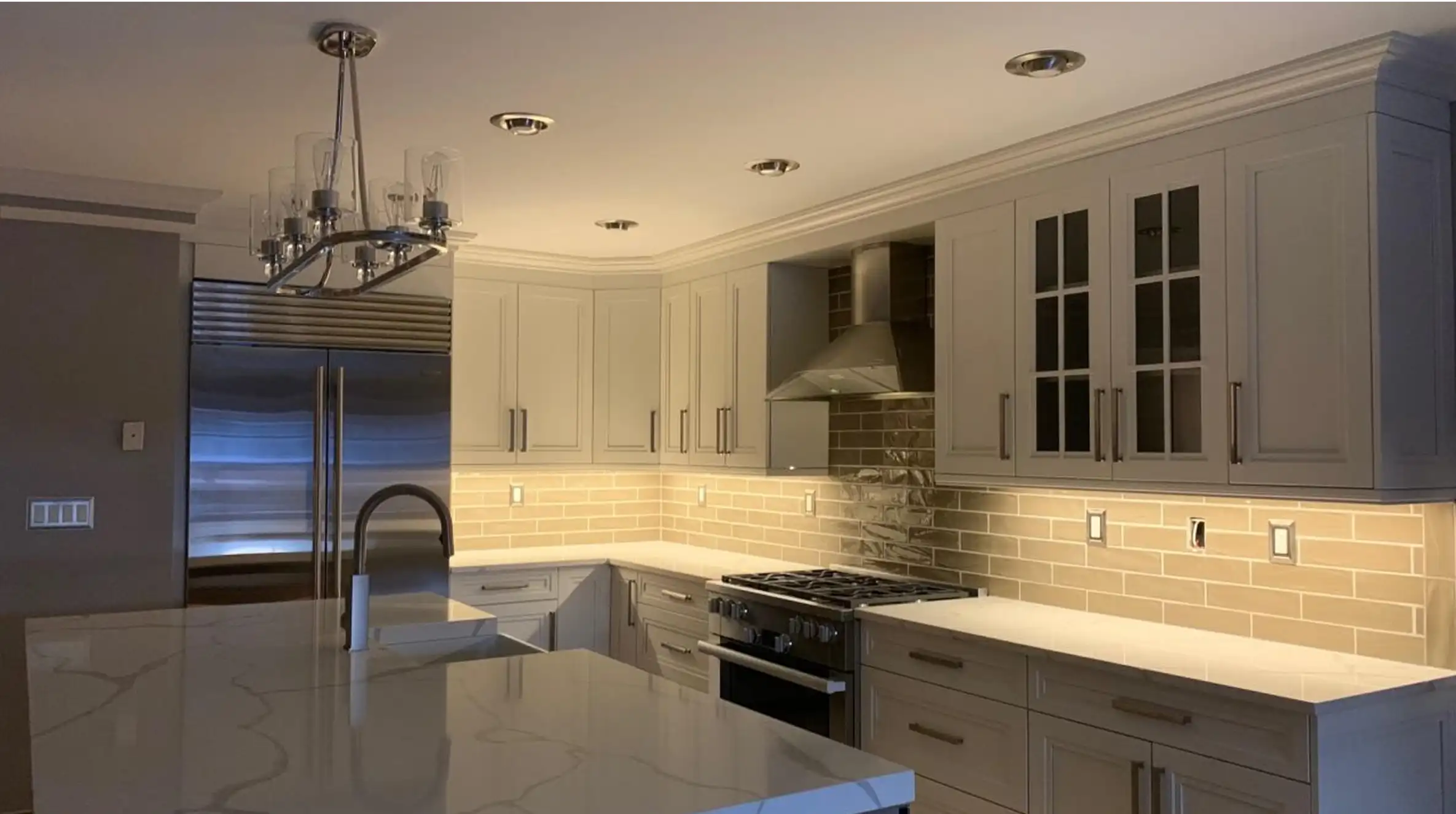
When Is the Best Time to Renovate Your Kitchen?
Timing your kitchen renovation wisely can help you save money, avoid stress, and ensure a smoother project overall. While the “best” time to remodel varies depending on your schedule and financial readiness, there are key seasonal and lifestyle factors to consider when planning your project.
1. Seasonal Considerations
Contractor demand, weather conditions, and pricing can fluctuate throughout the year. Choosing the right season can lead to better availability and potential savings.
- Spring and Summer:
- These are peak renovation seasons due to favorable weather and longer daylight hours.
- Contractors are in high demand, which can drive up prices and extend wait times.
- Ideal if you want to open windows for ventilation or set up an outdoor cooking area during construction.
- Home Equity Loans or HELOCs (Home Equity Line of Credit):
- Borrow against the equity in your home.
- Typically offer lower interest rates than personal loans.
- Home equity loans are lump-sum; HELOCs work like credit lines.
- Risk: Your home is collateral, so nonpayment can lead to foreclosure.
- Fall:
- A good balance between contractor availability and weather.
- Many homeowners schedule projects after summer vacations and before the holiday season.
- Suppliers may start offering end-of-season discounts on materials and appliances.
- Winter (Off-Season):
- Typically the slowest season for contractors, so you might get lower bids and more flexible scheduling.
- Less ideal for extensive structural work due to weather, but great for interior-focused remodels.
- Keep in mind potential holiday disruptions and the challenge of being without a kitchen during colder months.
2. Plan Around Holidays, Family Needs, and Budget Cycles
Beyond the seasons, your personal and family calendar plays a critical role in choosing the right time to renovate.
- Avoid holidays and major family events: Hosting Thanksgiving or a birthday party without a functioning kitchen can be a major inconvenience.
- Consider school breaks: If you have children, it might be easier to renovate while they’re away at camp or school.
- Evaluate your financial timing:
- Schedule your project after receiving a bonus, tax return, or other lump sum income.
- Consider spacing out purchases (e.g., buying appliances during sales, then renovating later).
Ultimately, the best time to renovate your kitchen is when you’re financially prepared and can manage the disruption to your household routine. With proper planning and strategic timing, you can make your renovation more efficient, cost-effective, and less stressful.
A kitchen renovation is a significant investment with costs that vary widely depending on scope, materials, and labor. Success hinges on careful planning, setting a realistic budget with a contingency, and remaining flexible to unexpected expenses. Partnering with an experienced team like NYC Kitchen and Bath can make the process smoother—from helping you clarify your priorities to guiding you through material selections and cost-saving options. Be sure to get multiple contractor quotes, prioritize your needs, and explore financing options that suit your situation. With thoughtful preparation, you can transform your kitchen into a functional and beautiful space without unnecessary stress or overspending.
Speak with Our Expert Designers to Get a Personalized Kitchen Renovation Estimate and Bring Your Dream Kitchen to Life
You don’t have to settle for an outdated, cramped, or inefficient kitchen. Visit our 10,000-square-foot showroom to explore a wide range of styles, finishes, and innovative features that can transform your kitchen into a beautiful and functional space. Discover the products and trusted brands we work with—and get inspired to create the kitchen you’ve always envisioned.
Give us a call today—NYC Kitchen and Bath has been exceeding client expectations for nearly a decade. Let us show you why we’re one of New York City’s most trusted kitchen renovation experts.
We have extensive experience designing, building, and installing custom kitchens for New Yorkers—no matter the budget. See for yourself why so many homeowners trust us with their kitchen renovations. Give us a call or stop by our showroom today!



